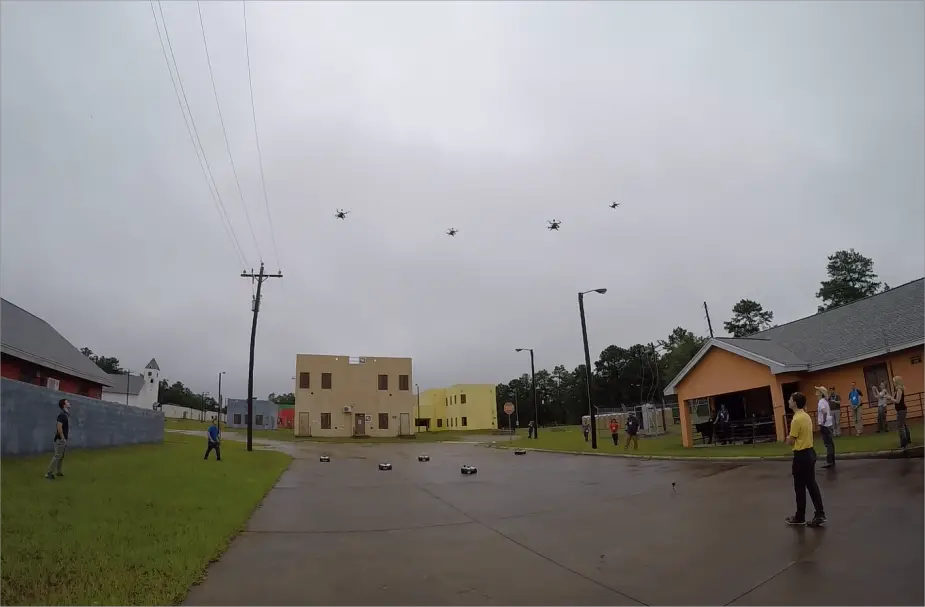U.S. teams test swarm autonomy in second major OFFSET field experiment
Swarms demonstrate tactics to isolate an urban objective in a test at Fort Benning, Georgia; agency awards contracts for next swarm sprint with focus on human-swarm teaming.

Autonomous air and ground vehicles head out for a run during the OFFSET program’s second field experiment in Fort Benning, Georgia (Picture source: DARPA)
During the second field experiment for DARPA’s OFFensive Swarm-Enabled Tactics (OFFSET) program, teams of autonomous air and ground robots tested tactics on a mission to isolate an urban objective. Similar to the way a firefighting crew establishes a boundary around a burning building, they first identified locations of interest and then created a perimeter around the focal point.
OFFSET envisions large swarms of collaborative autonomous systems providing critical insights to small ground military units in urban areas where vertical structures, tight spaces, and limited sight lines constrain communications and mobility.
The program includes multiple “sprint” efforts, which focus on different elements of the command, control, and collaboration among large numbers of vehicles and humans.
For the experiment, which took place in June at the Selby Combined Arms Collective Training Facility in Fort Benning, Georgia, teams undertook a complex scenario spanning two city blocks. Tasks included locating and isolating a mock city hall building, locating and securing an objective inside, and then securing the building – all while maintaining situational awareness of the surrounding area. Runs lasted up to 30 minutes each.
OFFSET includes two main performer types: Swarm System Integrators and Swarm Sprinters. The Swarm System Integrators, Northrop Grumman and Raytheon BBN, create OFFSET architectures, interfaces, and their respective Swarm Tactics Exchanges, which houses tools to help performers design swarm tactics by composing collective behaviors, swarm algorithms, and existing swarm tactics. The Swarm Sprinters perform focused tasks and deliver additional technologies to merge with system integrators.
The June event brought together the integrators and second set of Swarm Sprinters, including Heron; Michigan Tech Research Institute; University of North Carolina, Charlotte; and Cornell University, to integrate and test swarm autonomy tactics and technologies.
“The pace of our scheduled experiments requires our performers to take risks” said Timothy Chung, the OFFSET program manager in DARPA’s Tactical Technology Office. “Rapid integration demands that our swarm teams, both integrators and sprinters, develop smarter ways to improve their current processes.”
The experiment at Fort Benning highlighted the benefits of continuous agile development and integration and deployment, the principle at the heart of the OFFSET program. The Swarm System Integrators showed maturation in field operations while the Swarm Sprinters contributed technologies to enhance system performance. The platform experimentation provided insights into the role of commercial-off-the-shelf technologies in a research and development program.
The recent field experiment was the second of six scheduled tests. Additional field experiments are targeted at intervals about six-months apart.
DARPA has awarded contracts for the next Swarm Sprint to develop novel approaches to Human-Swarm Teaming over the next six months to demonstrate in the next OFFSET field experiment. The awardees are: Case Western Reserve University, Charles River Analytics, and
Northwestern University
Each of the planned five core “sprints” focuses on one of the key thrust areas: Swarm Tactics, Swarm Autonomy, Human-Swarm Teaming, Virtual Environment, and Physical Testbed. Each Swarm Sprint topic emphasizes different perspectives to ultimately enable breakthroughs in swarm capabilities.


























